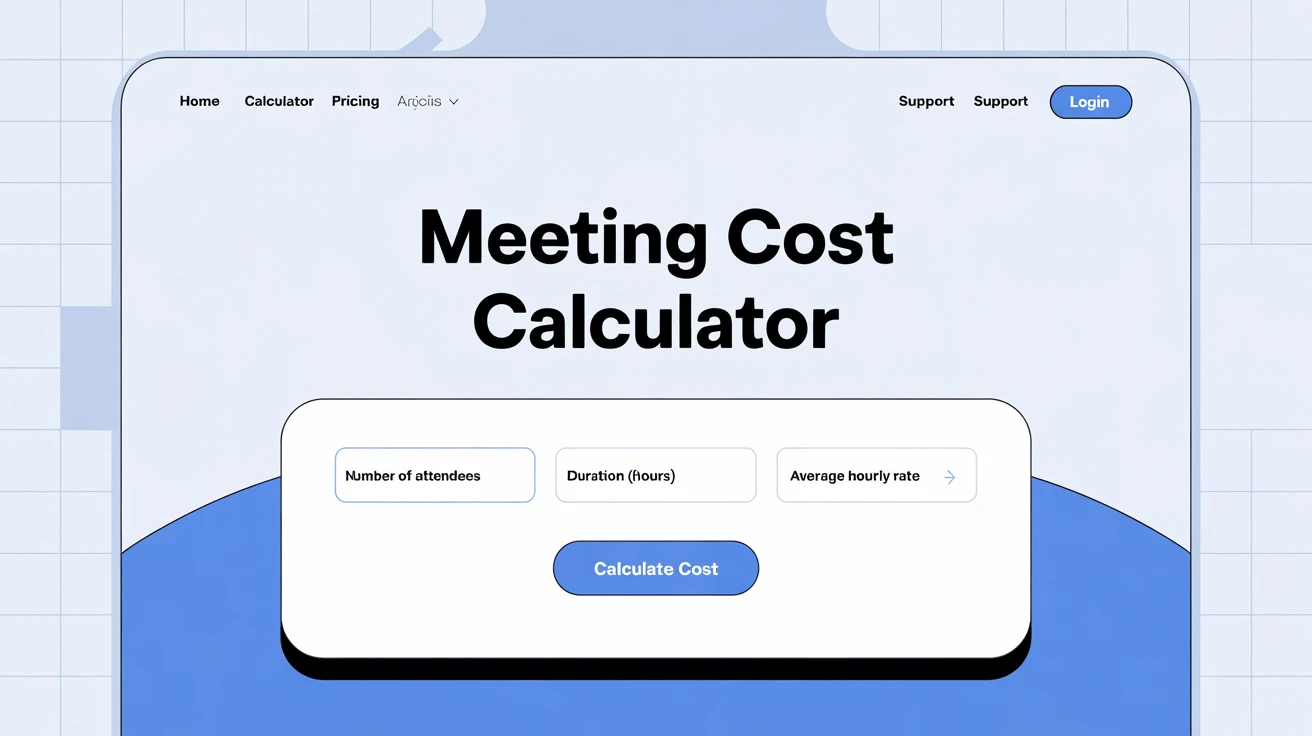Meetings are essential, but they consume significant time and money.
Ever wondered about the true cost? This simple tool helps you visualize it in real-time.
Just enter the number of attendees and their average annual salary.
Click “Start Timer” to begin the timer and watch the cost accumulate live, second by second.
Seeing the financial impact provides powerful context for meeting length and necessity.
Use this calculator to foster awareness, encourage efficiency, and make every minute count.
Put a price tag on your meetings and boost productivity!
Meeting costs
Business meetings represent a substantial investment for organizations, both in terms of time and money.
According to recent studies, unproductive meetings alone cost U.S. businesses between $34-37 billion annually, primarily through wasted salaries and operational expenses.
For individual employees, the financial impact is equally concerning, with the average worker spending approximately $29,000 worth of time in meetings each year.
The cost escalates dramatically for higher-level executives, with directors costing their companies between $75,264 and $98,784 annually just for meeting attendance.
Large corporations face an even more staggering reality, with some losing up to $100 million per year due to unnecessary meetings.
In 2025, the global average cost per attendee at business meetings has reached $170 USD, representing an increase of over 80% since the COVID-19 pandemic began.
This rising cost reflects both inflation and the increasing complexity of modern business gatherings.
The time investment is equally significant.
Employees typically spend around 31 hours monthly in unproductive meetings, while organizations dedicate approximately 15% of their total time to meeting-related activities.
For senior leadership, the burden is even heavier—senior managers spend nearly 23 hours weekly in meetings, while CEOs attend around 37 meetings each week, consuming up to 72% of their valuable work time.
From a macroeconomic perspective, meetings cost the U.S. economy an estimated $532 billion annually, highlighting their extensive impact on national productivity.
Part of this massive cost stems from efficiency challenges—only 30-45% of meetings are considered productive, with many lacking structured agendas or clear objectives.
Additionally, around 71% of professionals report losing time weekly due to canceled or unnecessary meetings.
The potential for savings, however, is substantial.
By eliminating unnecessary meetings, businesses with 100-400 employees could save up to $2.5 million annually, while larger organizations with 5,000 employees could recover over $100 million each year.
These figures underscore the critical need for organizations to evaluate their meeting practices and implement more efficient strategies, including structured agendas, shorter durations, and alternative communication methods to reduce costs and enhance overall productivity.

